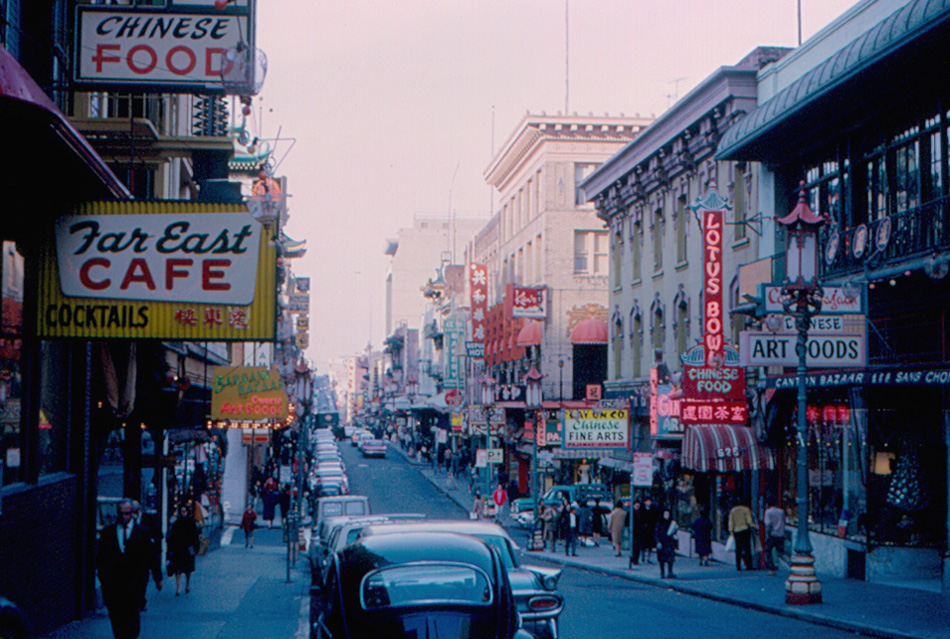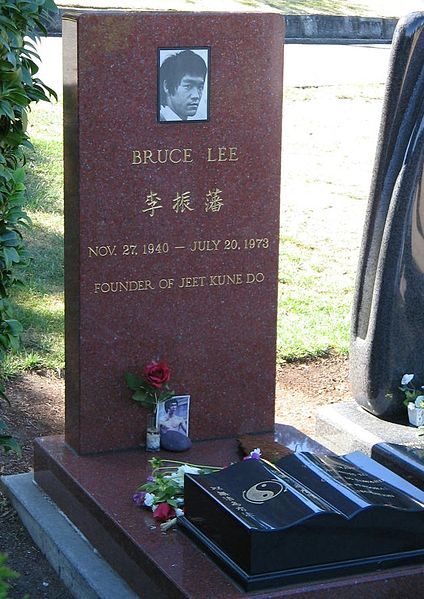Charles Russo’s Striking Distance distinguishes itself from the many existing biographies of Bruce Lee by focusing not on Lee as a movie star, but as a dissident, iconoclastic martial artist who sought to radically reform the way martial arts, especially kung fu, were taught and practiced. According to Russo, Lee “had the specific agenda of advocating for a modern and more effective approach to the martial arts, and he pushed toward this with little regard for the damaged egos that would be left in his wake.”
To provide the context for this agenda, Russo details Lee’s education in the martial arts. Beginning in 1954 at the age of thirteen Lee studied the Wing Chun style of kung fu in Hong Kong under legendary master Ip Man. From that point on, Lee studied a variety of martial arts styles, testing them out in actual street fights. While never entirely abandoning the spiritual and aesthetic elements of martial arts, practical fighting applications remained a foremost consideration for Lee. Lee then moved to San Francisco in 1959 after one too many street fights in Hong Kong led to trouble with the local authorities.
 |
| A statue of Bruce Lee in Hong Kong where he first studied kung fu |
Russo also provides a necessarily concise history of kung fu itself, carefully negotiating the many “invented traditions” that exist in the history of martial arts. He goes into greater detail about the history of kung fu as it was taught in America, especially in San Francisco’s Chinatown. He does a service to the history of martial arts by providing capsule biographies of the many now somewhat forgotten martial arts masters who were also important to the development of the martial arts in America.
Bruce Lee ran into conflict with some of these masters when, in a series of public demonstrations, he criticized the forms and stances of traditional martial arts as being impractical for actual fighting. He disliked the long sets of moves that students were required to memorize as being too rigid for a real fight. He also opposed the horse stance, in which the practitioner emulates being mounted on a horse, legs spread wide in a deep squat, which is a foundational position of many schools of kung fu (as well as karate and tae kwon do). Novice students in the kung fu schools of Chinatown would spend many long hours mastering this basic position before progressing to more advanced techniques. Yet Bruce Lee dismissed the position as eminently impractical, in that punches thrown from this position lacked the power that could be delivered by engaging the full body through twisting the hips. Further, the static foot position prevented quick offensive and defensive footwork.

San Francisco's Chinatown at the time Lee was challenging its established kung fu masters
Russo overturns one of the myths about Lee when he shows that it was critiques like these that led to the now infamous showdown in Oakland in November of 1964 between Lee and Wong Jack Man, a martial artist sent to confront him by the traditionalist masters of San Francisco’s Chinatown. Popular legend is that this confrontation was a response to Lee’s violating tradition by teaching kung fu to non-Chinese students; if Man won the fight, Lee would have to give up teaching.
However, Russo persuasively argues that this was not the cause of the fight, and that some of these traditionalists had, by 1964, already began teaching non-Chinese themselves. More importantly, he shows that Lee had publicly insulted the old masters, most notably in a demonstration in Chinatown’s Sun Sing theater in August of 1964, referring to them as “old tigers” with no “teeth,” and stating that “90%” of kung fu taught in America is “nonsense.” Such arrogance and disrespect to one’s elders could not be allowed to stand, especially after Lee challenged anyone who doubted his word to come to his studio in Oakland. Russo makes his case by relying on an impressive set of personal interviews conducted with the surviving members of the West Coast martial arts scene. These extensive interviews are the most notable element of the book.
The work is no hagiography, however. Russo clearly admires Lee’s skills, intelligence and ambition, but he is willing to point out that some of Lee’s troubles with his contemporaries sprung from his own arrogance and indifference to good manners. Moreover, he does puncture a few holes in the aura of invincibility that has grown up around Lee, pointing out incidents in which Lee did fail in demonstrations against more traditional martial arts practitioners. Even the famous Wong Jack Man fight comes across as more of a draw than a complete victory in Russo’s retelling.
 |
| Bruce Lee's grave in Seattle noting his status as founder of Jeet Kune Do |
The biggest disappointment in the work is that it ends too early. Russo choses to end the work with Lee’s first Hollywood screen test, in February of 1965. This audition leads to his role as Kato on the Green Hornet television show, and then to a career in film, culminating in 1973’s Enter the Dragon. While this compartmentalization makes some sense - Lee’s focus during these years shifted more to acting - it would have been interesting to see how he continued to promote his critique of the martial arts during the last eight years of his life. For example, in 1978’s posthumous release The Game of Death, during a fight scene, Lee lectures his real-life student Dan Inosanto with dialogue that could have been taken from his earlier Chinatown lectures: “Rehearsed routines lack the flexibility to adapt.”
In addition, a more thorough assessment by Russo of the success of Lee’s efforts, both in the latter stage of his tragically short life, and posthumously, would have been welcome. While Lee did increase the visibility of kung fu in American popular culture, it isn’t clear how much success his critique of traditional martial arts has had. In 1967 Lee founded his own form of martial arts, Jeet Kune Do, based on his criticisms of, and improvements upon, traditional martial arts. However, today Jeet Kune Do studios remain vastly outnumbered by traditional kung fu, karate and tae kwon do studios, (not to mention relatively recent imports such as Brazillian jiu jitsu and Krav Maga) and the horse stance is still taught at most of them.
Nevertheless, Russo’s work is a useful addition to both the biographies of Bruce Lee, and the history of martial arts in general, and is quite an entertaining read as well.
